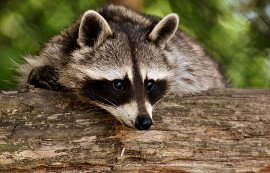 Encounters with wildlife is a year-round reality for those living in the Grey Bruce area, especially in rural areas.
Encounters with wildlife is a year-round reality for those living in the Grey Bruce area, especially in rural areas.
With the arrival of more consistent warmer temperatures, so comes the natural increase in the wildlife population. As spring nears, all sorts of animals are beginning to come out of hibernation with their new offspring. From larger animals like bears, deer, wolves, foxes, and coyotes to small mammals like skunks and squirrels, we all need to exercise a little extra caution this time of year.
While humans and wildlife generally coexist harmoniously, interactions are inevitability for most us – especially if you frequent the many beautiful hiking trails in our communities. However, these encounters can be largely avoided with the use of a few key safeguards.
Remember, wild animals need to hunt and forage for their food, and often don’t discern between a potential meal and a domesticated pet. Naturally, smaller pets like cats and small dogs are at a higher risk to predators, so being prudent is a must. Even though large dogs are typically not seen as vulnerable prey by wildlife, there is always the risk of a confrontation which may result in injury or transmission of parasites and diseases.
Wild animals don’t usually attack pets for sport – they’re simply living the way nature taught them. In the case of starving, rabid, or injured animals, behaviours can be aggressive and unpredictable. Many natural wildlife habitats are disrupted due to urban development, forcing these animals to live in closer proximity to humans.
To keep your pet out of harm’s way, the most effective strategy is to avoid situations where your pet is at higher risk of wildlife encounters. This may sound like common sense, however it can be a little more complicated than simply staying out of the forest.
Keep Pets On Leash for Optimal Safety
While it is convenient to let your pet out to play in your enclosed backyard, it may make them easy targets to predators. For example, coyotes can easily clear a six-foot fence. Raccoons and other small animals can climb over or dig under fences to gain access to your yard. While your pet does their business in the yard, it is advised to stay with them, especially at night.
A human presence alone can be an effective way to ward off wildlife, especially when your pet is on a leash.
Be Extra Aware at Night
Most encounters between pets and wildlife happen after sundown. Many animals are nocturnal, and with the benefit of night vision hunt primarily at night. Be extra cautious of your pet’s safety during this time, and always maintain awareness of your surroundings.
If you enjoy evening walks, you are at lower risk of animal encounters in frequently used, well lit areas. And again, keep your pet on a leash. If possible, consider leaving your pet at home for their safety.
Don’t Invite Unwanted Attention
Decorative bells on your pet’s collar may be cute, however may make them an easier target for desperate predators. Sound plays a primary role in the ability to track prey, and the sound of a bell invites curiosity to all in earshot.
Also, consider how inviting your garbage can be to wildlife. If possible, keep your garbage in a lid-locked bin inside a garage or shed. If you must keep garbage outside, make sure it is well secured. Raccoons, bears, and other unwanted wildlife are attracted to our waste, so try not to keep household garbage hanging around for long.
Finally, don’t unintentionally invite wild animals to hide around your property. For example, a turned-over wheelbarrow, under a trailer, or loose brush and yard waste make excellent hiding spots for little critters. By providing space for animals to hide, you’re inviting them closer to your home.
Living harmoniously with wild animals can be easy for pet owners if you follow these simple steps to avoid unwanted interaction. Stay alert, stay informed!
Brandon Forder, known as The Pet Expert, is vice-president of Canadian Pet Connection, an industry leader in healthy pet lifestyles. Brandon holds multiple certifications in pet nutrition, and has more than twenty-five years’ experience specializing in pet health and behaviour. He has written hundreds of informative pet-related articles for newspapers, magazines, radio, and the popular Ask the Pet Expert Blog. Brandon is highly skilled in pet problem solving, and enjoys teaching others about smart and responsible pet ownership. To learn more, visit www.CanadianPetConnection.ca.












